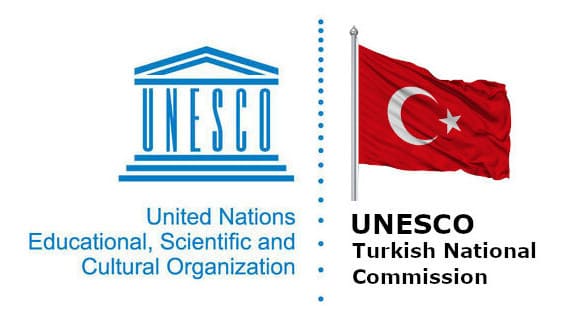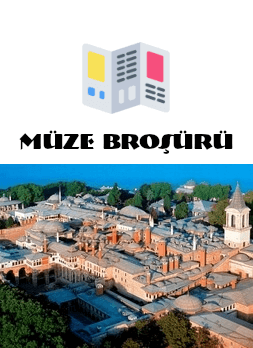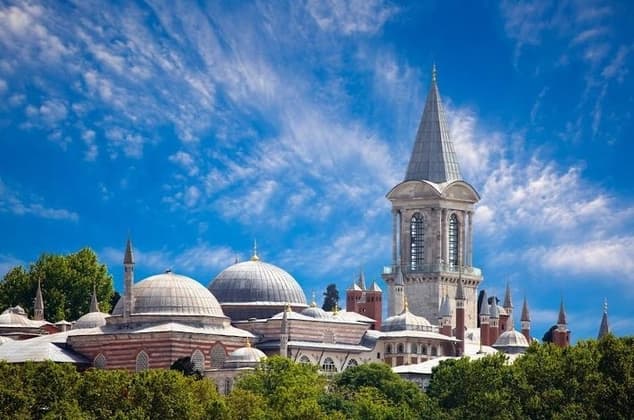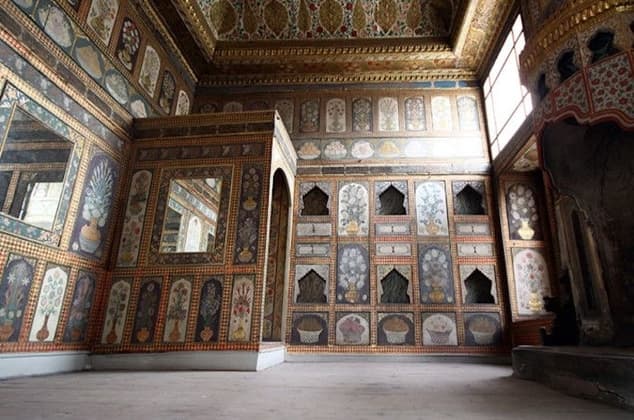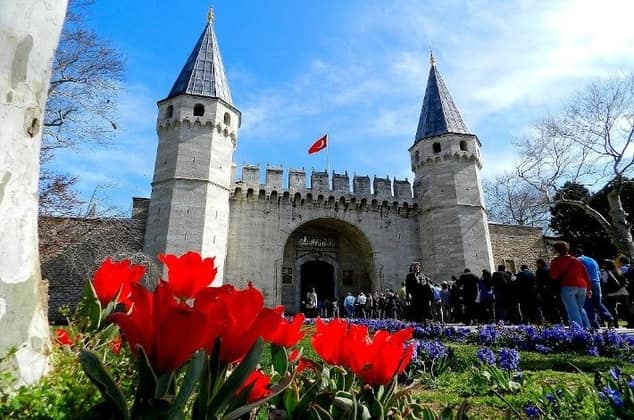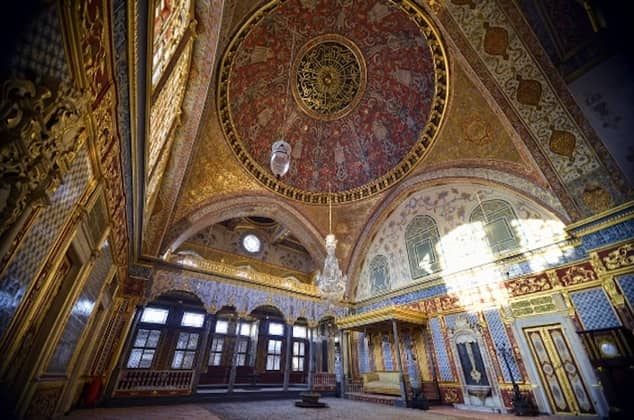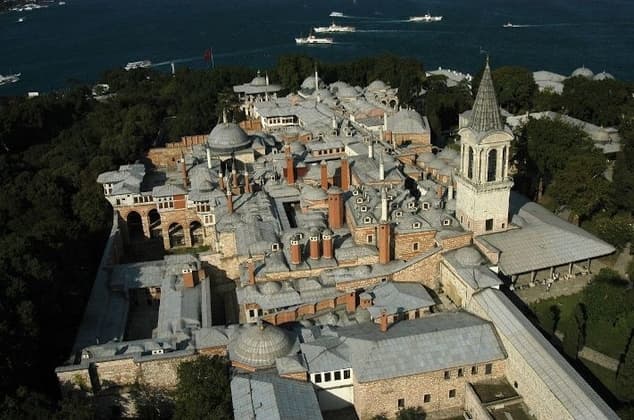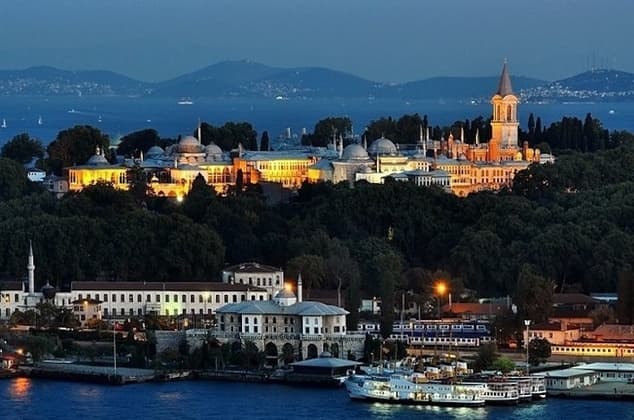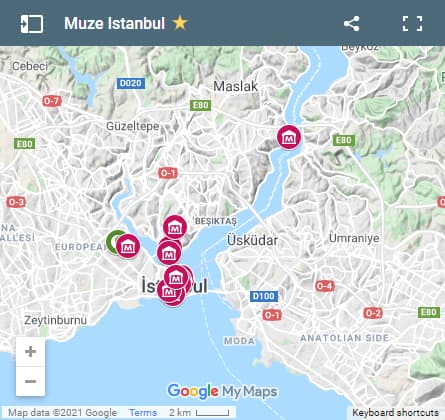OTTOMAN IMPERIAL PALACE
it served as the main residence and administrative headquarters of the Ottoman sultans:
Topkapı Palace (Topkapı Sarayı) and Harem are likely to have more colourful stories than most of the world's museums put together. Libidinous sultans, ambitious courtiers, beautiful concubines and scheming eunuchs lived and worked here between the 15th and 19th centuries when it was the court of the Ottoman empire. A visit to the palace's opulent pavilions, jewel-filled Treasury and sprawling Harem gives a fascinating glimpse into their lives.
It has many exhibion halls, Treasury section, and Harem.
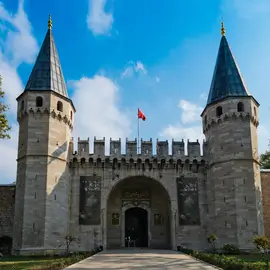
(Gate of Salutation / Middle Gate)"
Mehmet the Conqueror built the first stage of the palace shortly after the Conquest in 1453, and lived here until his death in 1481. Subsequent sultans lived in this rarefied environment until the 19th century, when they moved to the ostentatious European-style palaces they built on the shores of the Bosphorus. Before you enter the palace's Imperial Gate (Bab-ı Hümayun), take a look at the ornate structure in the cobbled square just outside. This is the rococo-style Fountain of Sultan Ahmet III, built in 1728 by the sultan who so favoured tulips. The main ticket office is in the First Court, just before the gate to the Second Court.
Topkapı Palace was home to all the Ottoman sultans until the reign of Abdulmecid I (1839-1860), a period of nearly four centuries.
First Court
Pass through the Imperial Gate into the First Court, which is known as the Court of the Janissaries or the Parade Court. On your left first monument is Hagia Irene Museum a Byzantine church of Hagia Eirene, more commonly known as Aya İrini. Third structure is former Imperial Mint (Darphane-i Âmire, constructed in 1727) which named Currency Imperial Ottoman Administration [Meskûkât-ı Şâhâne] after the Tanzimat Reform.
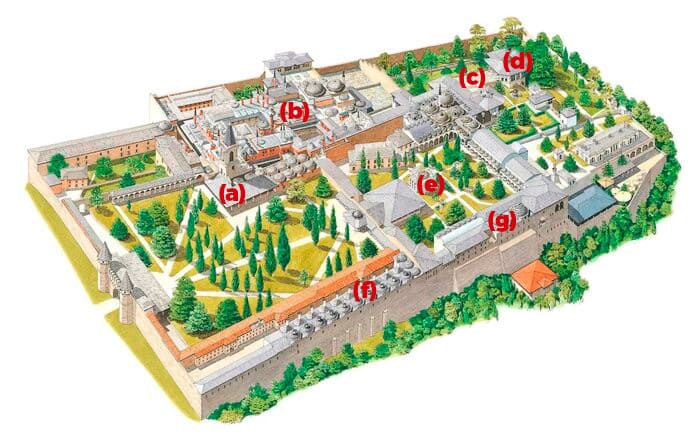
“(a) Divan, (b) Harem,
(c) İftariye Pavilion, (d) Baghdad Pavilion,
(e) Library of Ahmet III, (f) Palace Kitchens,
(g) Treasury,"
Second Court
The Middle Gate (Ortakapı or Bab-üs Selâm) led to the palace’s Second Court, used for the business of running the empire. In Ottoman times, only the sultan and the valide sultan (mother of the sultan) were allowed through the Middle Gate on horseback. Everyone else, including the grand vizier, had to dismount.
The Second Court has a beautiful park-like setting. Unlike typical European palaces, which feature one large building with outlying gardens, Topkapı is a series of pavilions, kitchens, barracks, audience chambers, kiosks and sleeping quarters built around a central enclosure. The great Palace Kitchens on the right (east) as you enter incorporate a dedicated Helvahane (confectionery kitchen). They hold a small portion of Topkapı’s vast collection of Chinese celadon porcelain, valued by the sultans for its beauty but also because it was reputed to change colour if touched by poisoned food.
On the left (west) side of the Second Court is the ornate Imperial Council Chamber (Dîvân-ı Hümâyûn). The council met here to discuss matters of state, and the sultan sometimes eavesdropped through the gold grille high in the wall. The room to the right showcases clocks from the palace collection.
North of the Imperial Council Chamber is the Outer Treasury, where an impressive collection of Ottoman and European arms and armour is displayed.
Harem Section
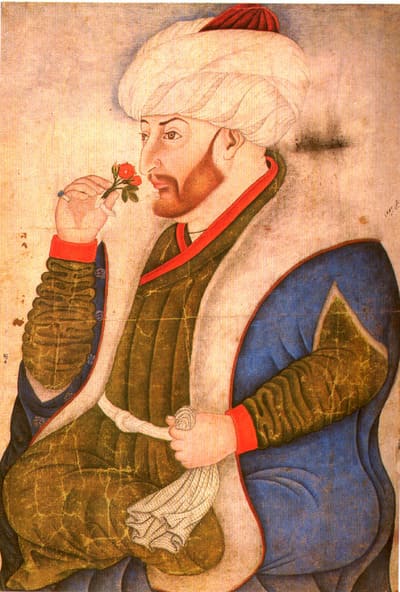
(Source: Bilkent University)."
|Click to Enlarge|
The entrance to the Harem is beneath the Tower of Justice on the western side of the Second Court. If you decide to visit – and we highly recommend that you do – you'll need to buy a dedicated ticket. The visitor route through the Harem changes when rooms are closed for restoration or stabilisation, so some of the areas mentioned here may not be open during your visit.
As popular belief would have it, the Harem was a place where the sultan could engage in debauchery at will. In more prosaic reality, these were the imperial family quarters, and every detail of Harem life was governed by tradition, obligation and ceremony. The word 'harem' literally means 'forbidden' or 'private'.
The sultans supported as many as 300 concubines in the Harem, although numbers were usually lower than this. Upon entering the Harem, the girls would be schooled in Islam and in Turkish culture and language, as well as the arts of make-up, dress, comportment, music, reading, writing, embroidery and dancing. They then entered a meritocracy, first as ladies-in-waiting to the sultan's concubines and children, then to the valide sultan and finally – if they were particularly attractive and talented – to the sultan himself.
The sultan was allowed by Islamic law to have four legitimate wives, who received the title of kadın (wife). If a wife bore him a son she was called haseki sultan; if she bore him a daughter, haseki kadın. Ruling the Harem was the valide sultan, who often owned large landed estates in her own name and controlled them through black eunuch servants. Able to give orders directly to the grand vizier, her influence on the sultan, on his wives and concubines, and on matters of state was often profound.
The earliest of the 300-odd rooms in the Harem were constructed during the reign of Murat III (r 1574–95); the harems of previous sultans were at the now-demolished Eski Sarayı (Old Palace), near present-day Beyazıt Meydanı.
The Harem complex has six floors, but only one of these can be visited. This is approached via the Carriage Gate. Next to the gate is the Dormitory of the Corps of the Palace Guards, a meticulously restored two-storey structure featuring swathes of magnificent 16th- and 17th-century İznik tiles. Inside the gate is the Dome with Cupboards, the Harem treasury where financial records were kept. Beyond it is the Hall with the Fountain, lined with fine Kütahya tiles from the 17th century featuring botanical motifs and inscriptions from the Koran and home to a marble horse-mounting block once used by the sultans. Adjoining this is the Mosque of the Black Eunuchs, which features depictions of Mecca on its 17th-century tiles.
Beyond this room is the Courtyard of the Black Eunuchs, also decorated with Kütahya tiles. Behind the marble colonnade on the left are the Black Eunuchs' Dormitories. In the early days white eunuchs were used, but black eunuchs sent as presents by the Ottoman governor of Egypt later took control. As many as 200 lived here, guarding the doors and waiting on the women of the Harem.
At the far end of the courtyard is the Main Gate into the Harem, as well as a guard room featuring two gigantic gilded mirrors. From here, the Concubines' Corridor leads left to the Courtyard of the Concubines and Sultan's Consorts. This is surrounded by baths, a laundry fountain, a laundry, dormitories and private apartments.
Across the Concubines' Corridor from the courtyard is a room decorated with a tiled chimney, followed by the Apartments of the Valide Sultan, the centre of power in the Harem. From these ornate rooms the valide sultan oversaw and controlled her huge 'family'. Of particular note is the Salon of the Valide Sultan with its lovely 19th-century murals featuring bucolic views of İstanbul, and a pretty double hamam dating from 1585; the gilded bronze railings were a later addition.
Past the Courtyard of the Valide Sultan is a splendid reception room with a large fireplace that leads to a vestibule covered in Kütahya and İznik tiles dating from the 17th century. This is where the princes, valide sultan and senior concubines waited before entering the handsome Imperial Hall for an audience with the sultan. Built during the reign of Murat III, the hall was redecorated in baroque style by order of Osman III (r 1754–57).
Nearby is the Privy Chamber of Murat III, one of the most sumptuous rooms in the palace. Dating from 1578, virtually all of its decoration is original and is thought to be the work of Sinan. The restored three-tiered marble fountain was designed to give the sound of cascading water and to make it difficult to eavesdrop on the sultan's conversations. The gilded canopied seating areas are later 18th-century additions.
Next door is the Privy Chamber of Ahmet III and adjoining dining room built in 1705. The latter is lined with wooden panels decorated with images of flowers and fruits painted in lacquer.
Back through the Privy Chamber of Murat III are two of the most beautiful rooms in the Harem – the Twin Kiosk/Apartments of the Crown Prince. These two rooms date from around 1600; note the painted canvas dome in the first room and the fine İznik tile panels above the fireplace in the second. The stained glass is also noteworthy. Past these rooms is the Courtyard of the Favourites. Over the edge of the courtyard (really a terrace) you'll see a large empty pool. Overlooking the courtyard are the tiny windows of the many small dark rooms comprising the kafes (cage) where brothers or sons of the sultan were imprisoned. Adjoining it is the tiled Harem Mosque with its baroque mihrab (niche in a minaret indicating the direction of Mecca). From here, you can follow the passage known as the Golden Road and exit into the palace's Third Court.
Third Court
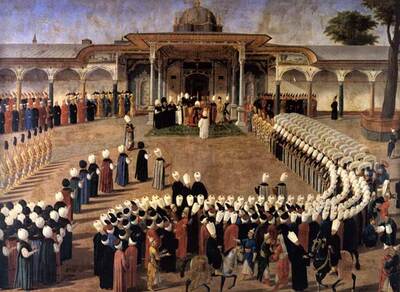
in front of the Gate of Felicity."
|Click to Enlarge|
The Third Court is entered through the Gate of Felicity. The sultan’s private domain, it was staffed and guarded by white eunuchs. Inside is the Audience Chamber, constructed in the 16th century but refurbished in the 18th century. Important officials and foreign ambassadors were brought to this little kiosk to conduct the high business of state. The sultan, seated on a huge divan, inspected the ambassadors' gifts and offerings as they were passed through the doorway on the left. Right behind the Audience Chamber is the pretty Library of Ahmet III, built in 1719.
On the eastern edge of the Third Court is the Dormitory of the Expeditionary Force, which was closed for restoration at the time of research. When it reopens it will house the palace's rich collection of imperial robes, kaftans and uniforms worked in silver and gold thread. On the other side of the Third Court are the Sacred Safekeeping Rooms. These rooms, sumptuously decorated with İznik tiles, house many relics of the Prophet. When the sultans lived here, the rooms were opened only once a year, for the imperial family to pay homage to the memory of the Prophet on the 15th day of the holy month of Ramazan. Next to the sacred Safekeeping Rooms is the Dormitory of the Privy Chamber, which houses an exhibit of portraits of 36 sultans. The highlight is a wonderful painting of the Enthronement Ceremony of Sultan Selim III (1789) by Konstantin Kapidagli.
Imperial Treasury
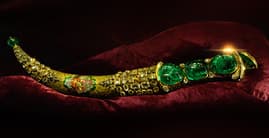
Located on the eastern edge of the Third Court, Topkapı's Treasury features an incredible collection of objects made from or decorated with gold, silver, rubies, emeralds, jade, pearls and diamonds. The building itself was constructed during Mehmet the Conqueror's reign in 1460 and was used originally as reception rooms. It was closed for a major restoration when we last visited. When it re-opens, look out for the jewel-encrusted Sword of Süleyman the Magnificent and the extraordinary Throne of Ahmed I (aka Arife Throne), which is inlaid with mother-of-pearl and was designed by Sedefhar Mehmet Ağa, architect of the Blue Mosque. And don't miss the Treasury's famous Topkapı Dagger, object of the criminal heist in Jules Dassin’s 1964 film Topkapı. This features three enormous emeralds on the hilt and a watch set into the pommel. Also worth seeking out is the Kasıkçı (Spoonmaker’s) Diamond, a teardrop-shaped 86-carat rock surrounded by dozens of smaller stones that was first worn by Mehmet IV at his accession to the throne in 1648.
Fourth Court
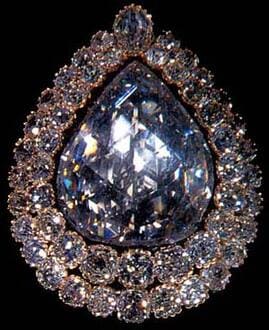
Pleasure pavilions occupy the palace's Fourth Court. These include the Mecidiye Kiosk, which was built by Abdül Mecit (r 1839–61) according to 19th-century European models. Up steps from the Mecidiye Kiosk is the Head Physician’s Pavilion. Interestingly, the head physician was always one of the sultan’s Jewish subjects. On this terrace you will also find the Kiosk of Mustafa Pasha, sometimes called the Sofa Köşkü. During the reign of Ahmet III, the Tulip Garden outside the kiosk was filled with the latest varieties of the flower.
Up the stairs at the end of the Tulip Garden is the Marble Terrace, a platform with a decorative pool, three pavilions and the whimsical İftariye Kameriyesi, a small structure commissioned by İbrahim I ('the Crazy') in 1640 as a picturesque place to break the fast of Ramazan. Murat IV built the Revan Kiosk in 1636 after reclaiming the city of Yerevan (now in Armenia) from Persia. In 1639 he constructed the Baghdad Kiosk, one of the last examples of classical palace architecture, to commemorate his victory over that city. Notice its superb İznik tiles, painted ceiling and mother-of-pearl and tortoiseshell inlay. The small Circumcision Room (Sünnet Odası) was used for the ritual that admits Muslim boys to manhood. Built by İbrahim I in 1640, the outer walls of the chamber are graced by particularly beautiful tile panels.
Visiting Information:
Location
Topkapı Palace Museum complex located on the Sarayburnu (Seraglio Point), which overlooks both the Marmara Sea and the Bosphorus Straight at historical peninsula (Fatih District) of İstanbul.
How to get Topkapı Palace
Public transportation system T1 (Tram 1) is the most convenient way to get Sultanahmet area, which only takes 5 minutes walk from Sultanahmet and Gulhane tram station to Topkapı Palace. The distance from Gulhane tram station to museum only 600 meters whereas from Sultanahmet tram station is 700 meters which this direction leads to imperial gate and following first courtyard of Topkapı Palace.
The Imperial gate (Bab-ı Hümayun) which is first exterior gate and security scanners and military guard area opens to first courtyard. First courtyard (Avlu) contains several monuments and historical places. First buiding is Hagia Irene Museum known also known as Saint Irene, one of the few churches that has not been converted into a mosque in the Ottoman area. Second building is Darphane (Darphane-i Âmire), former imperial mint and was the place of production of all the gold and silver Ottoman coins.
Facilities & Services & Tips & Rules
- Disabled access is possible but wheelchairs are not available and cobblestone-covered hills might cause problems for handicapped travelers.
- There is no parking facility in the palace place.
- Photography is not allowed inside the museum halls.
- Tickets for children below the age of 6 are free.
- There is no charge for admission for visitors with disabilities. Please present proof of disability at the entrance to obtain your free ticket.
- Discounted tickets are offered to foreign students aged 12-24. A valid International Student Identity Card (ISIC) must be presented to avail of this discount.
- Turkish and TRNC citizens under the age of 18 enjoy free admission to Topkapı Palace Museum.
- Topkapı Palace combined tickets are valid for 1 day from the date of purchase.
- For a quicker and more efficient way to purchase tickets, head to the kiosks conveniently located beside the main ticket booths. Ticketing kiosks accept credit cards only. You can seek assistance from the readily available attendant located next to the kiosks.
- Limited-capacity night tour sessions (max 300 visitors) provide an intimate and unforgettable exploration of the palace after dark on Saturdays (between 9 PM and 11 PM local time). For more information and reservations, please call +90 (212) 236 9000 (ext. 3761).
- Audio guides or personal guides are recommended to bring out sophisticated details of the palace.
- Imperial gate security check queues can be long, You can enter the first courtyard from Archaelogy Museum access via a steep path through Gülhane Park.
- Smoking (including electronic cigarettes) is strictly prohibited throughout the entire premises of the museum to avoid potential fire incidents and exposing other visitors to secondhand smoke. On November 7, 1996, smoking was banned in public areas by Law No. 4207 in Türkiye.
Best things to discover in Topkapı Palace
Topkapı Palace Museum have large collections of porcelain, robes, weapons, Ottoman miniatures, Islamic calligraphic manuscripts as well as other Ottoman treasures and jewellery. Visit the Palace Treasury that holds a fascinating collection of the world’s most famous and spectacular jewels including the famous Topkapı Dagger. This dagger was the subject of the famous film Topkapı.
See Also
- http://istanbul.gov.tr/ | Museums of İstanbul
- http://info.ottomaninscriptions.com/ | Database for Ottoman inscriptions in the Topkapı Palace Museum
- https://en.unesco.org/ | Silk Roads Programme - UNESCO
- http://www.alanbaskanligi.gov.tr/ | Sultanahmet Kentsel Arkeolojik Koruma Alanı
- https://www.millisaraylar.gov.tr/ | Research Services
- http://ee.bilkent.edu.tr/ | Historical Background on the Topkapı Palace

